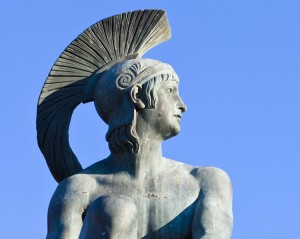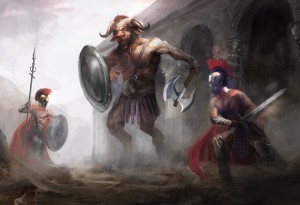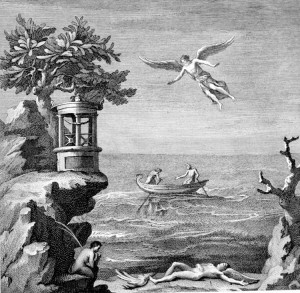Mythic Monday: Theseus of Athens
Monday, December 11th, 2017December 11, 2017
In Greek mythology, Theseus was a young adventurer who became king of Athens. In the most well-known story about Theseus, he slew the fearful Minotaur—a beast with the body of a man and the head of a bull.
Theseus was the son of Aegus, the king of Athens. According to legend, Athens had to send seven young men and seven young women to Crete each year in tribute to that island’s King Minos. Minos sent the Athenian youths to their deaths in the Labyrinth, a confusing maze that housed the Minotaur. One year, Theseus was among the young Athenians forced to go to Crete. As Theseus left home, Aegus told him to change the sails of his ship from black to white on his return voyage to indicate that he had survived.
In Crete, King Minos’s daughter Ariadne fell in love with Theseus. She gave him a ball of thread to unwind as he traveled through the Labyrinth so that he could follow it back out again. Theseus explored the Labyrinth and soon located the Minotaur, which he killed. He then led the other Athenians out of the maze, following the thread to freedom.
In his haste to return to Athens, Theseus forgot to change the sails of his ship from black to white. When Aegus saw black sails on Theseus’s ship, the king thought Thesius had died. In sorrow, Aegus killed himself in sorrow. Some accounts say he threw himself from a cliff into the sea, a body of water—the Aegean Sea—named for the unfortunate king. Theseus then became king of Athens.





